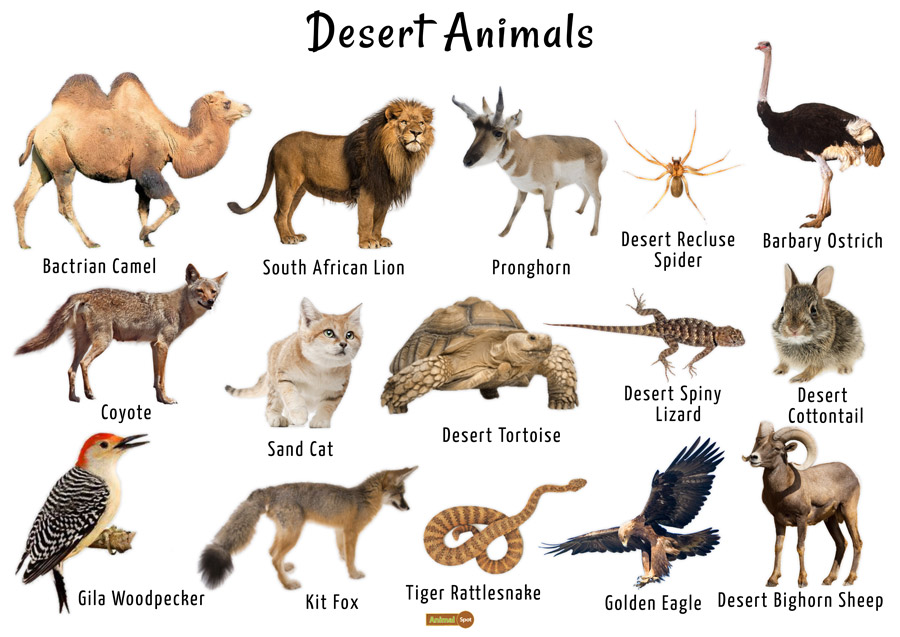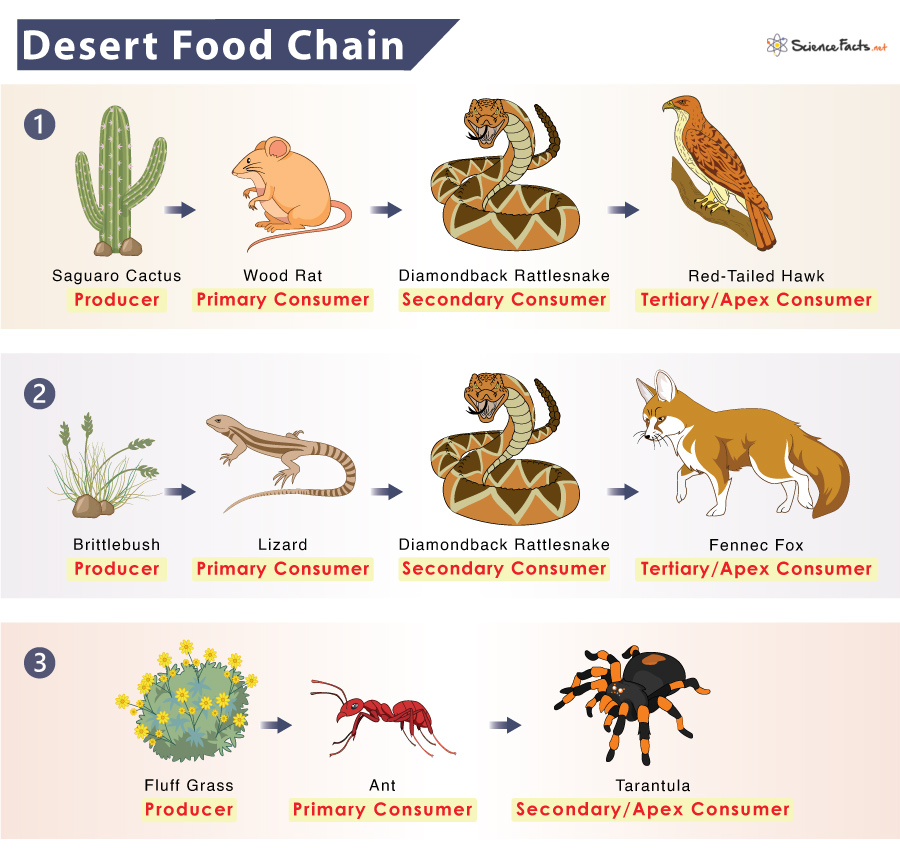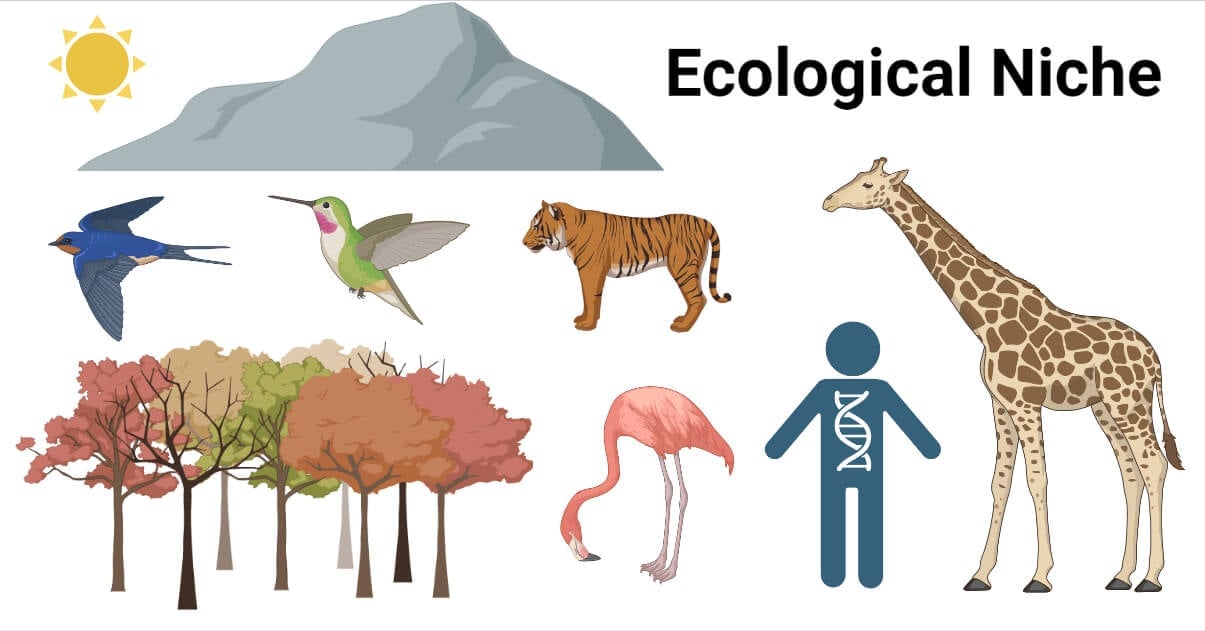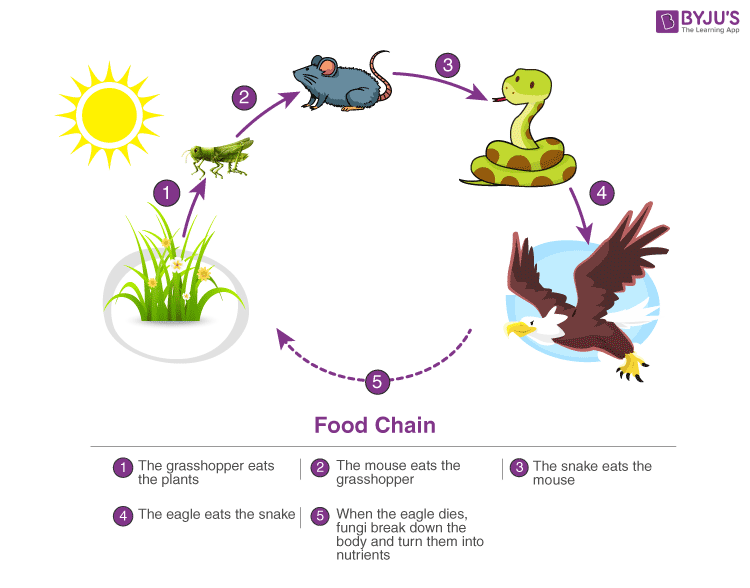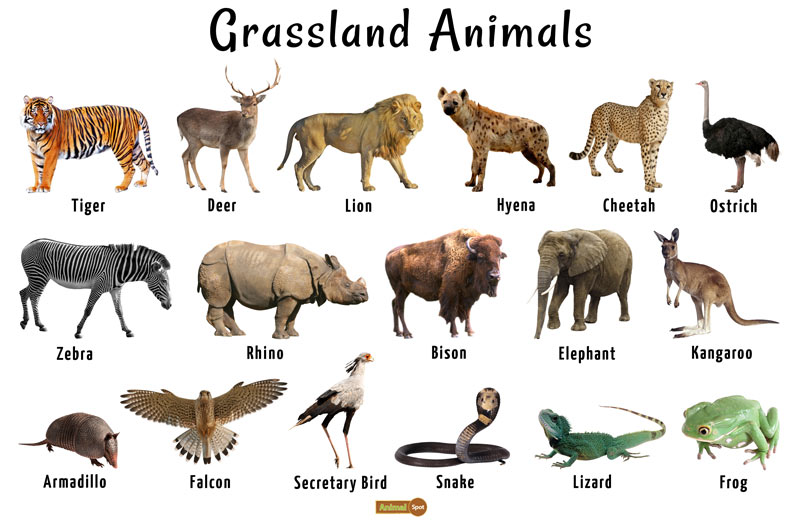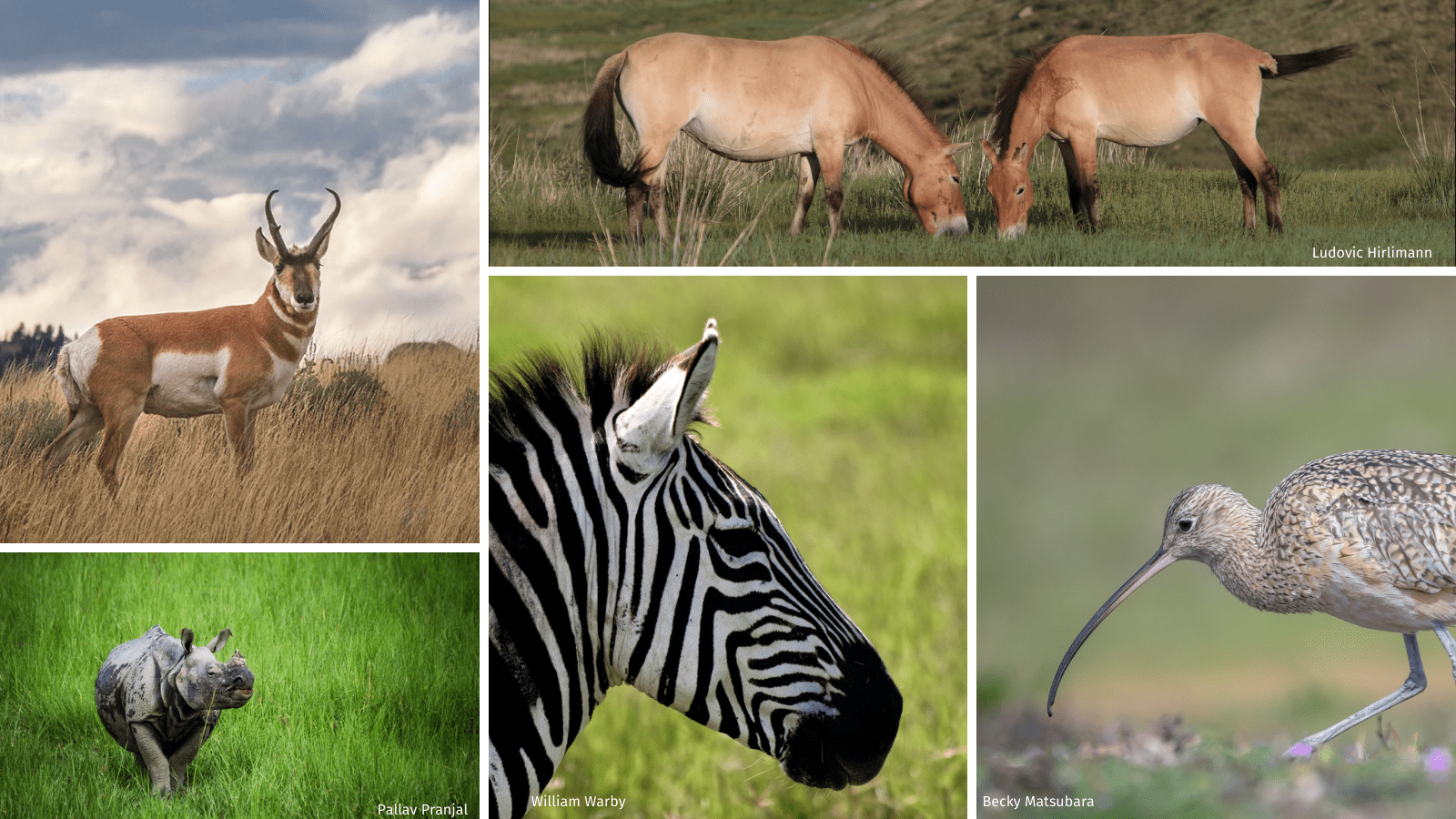Topic food web of desert ecosystem: Explore the fascinating food web of desert ecosystems, where every organism plays a vital role in sustaining the delicate balance of life under extreme conditions.
Table of Content
- What is a desert food chain and how does energy transfer through an ecosystem in the desert?
- Overview of Desert Ecosystems
- Primary Producers in Deserts
- Primary Consumers: Herbivores and Omnivores
- Secondary and Tertiary Consumers: Carnivores
- Decomposers and Detritivores: Recycling Nutrients
- Adaptations to Extreme Conditions
- YOUTUBE: Desert Food Chain Animation for School
- Impact of Climate Change on Desert Food Webs
- Conservation Efforts for Desert Ecosystems
What is a desert food chain and how does energy transfer through an ecosystem in the desert?
A desert food chain is a linear sequence of organisms where each organism consumes the one below it and is consumed by the one above it. It represents the transfer of energy through an ecosystem in the desert.
The energy flow in a desert ecosystem starts with the producers, which are usually plants that undergo photosynthesis to create their own food. These plants are then consumed by primary consumers, such as insects and small mammals, which in turn are consumed by secondary consumers like lizards and snakes. The energy continues to flow through the ecosystem to higher-level consumers, such as birds of prey or larger mammals.
Energy transfer through a desert ecosystem can also be represented by a food web, which is a more complex diagram showing the interconnected feeding relationships within an ecosystem. A food web includes multiple food chains and highlights the variety of pathways in which energy can flow through the ecosystem.
In summary, a desert food chain and food web illustrate how energy is transferred from one organism to another in the desert ecosystem, ultimately sustaining the various organisms that inhabit the region.
READ MORE:
Overview of Desert Ecosystems
Desert ecosystems are characterized by their extreme dryness, receiving less than 250 mm (10 inches) of rainfall annually. These unique environments cover about one-fifth of Earth"s surface and exhibit a wide range of temperatures, from scorching heat to freezing cold. Despite these harsh conditions, deserts are home to a diverse array of life forms that have adapted to survive with minimal water.
Deserts are typically classified into four types based on their geographic and climatic conditions: hot and dry deserts, semi-arid deserts, coastal deserts, and cold deserts. Each type supports distinct communities of plants and animals specially adapted to their specific environment. Hot and dry deserts, like the Sahara, experience extreme temperatures and sparse rainfall. Semi-arid deserts, such as the Great Basin, have slightly more precipitation, allowing for a broader variety of life. Coastal deserts, like the Atacama, receive fog and dew as their main sources of moisture. Cold deserts, found in regions like the Gobi, are characterized by cold winters and occasional snowfall.
Despite their inhospitable reputation, deserts play a crucial role in Earth"s ecology. They are biodiversity hotspots, supporting species that are not found anywhere else on the planet. Additionally, deserts influence global climate patterns and offer insights into climate change resilience and adaptation. Understanding desert ecosystems is essential for conservation efforts and for appreciating the delicate balance of life in these extreme environments.

Primary Producers in Deserts
Primary producers form the foundation of the desert ecosystem"s food web, harnessing the sun"s energy through photosynthesis. Despite harsh conditions, deserts are home to a variety of resilient plant life that has adapted to thrive in an environment with limited water resources.
- Cacti: Iconic desert plants, cacti have thick, fleshy stems that store water, allowing them to survive long periods of drought. Their deep root systems also help in accessing water from deep underground.
- Shrubs: Shrubs like creosote bush and sagebrush are prevalent in desert landscapes. They have small, waxy leaves to minimize water loss and are adapted to survive in the nutrient-poor soils common in desert regions.
- Grasses: Certain grasses can survive in desert conditions, growing quickly during rare rainfall events and then going dormant during dry periods. Their extensive root systems help prevent soil erosion and retain moisture.
- Succulents: Apart from cacti, other succulents such as agaves and aloes store water in their leaves and stems, displaying a range of adaptations to manage direct sunlight and conserve moisture.
- Wildflowers: Desert wildflowers exhibit a phenomenon known as "superbloom" during rare, wetter seasons, carpeting the desert floor with vibrant colors and attracting a variety of pollinators.
These primary producers are crucial for the desert ecosystem, providing food and habitat for various herbivores and serving as the starting point for the desert"s food web. Their adaptations to conserve water and survive in extreme temperatures and conditions demonstrate the resilience of life in desert environments.
Primary Consumers: Herbivores and Omnivores
Desert ecosystems support a variety of primary consumers, which include both herbivores and omnivores. These animals are crucial for transferring energy from the primary producers to higher trophic levels within the food web. Despite the scarcity of vegetation, these consumers have adapted to make the most of the available resources.
- Herbivores: These are animals that feed directly on plants, seeds, and fruits. Examples include:
- Desert rodents such as kangaroo rats, which thrive on seeds and plants.
- Insects like the desert locust, which consume a variety of desert vegetation.
- Larger mammals such as the bighorn sheep, which graze on grasses and shrubs.
- Omnivores: These animals have a more varied diet, consuming both plant and animal matter. Examples include:
- Desert tortoises, which eat both grasses and small insects.
- Various bird species that feed on seeds, fruits, and insects.
- Coyotes, which are highly adaptable and eat fruits, vegetables, and small animals.
These primary consumers play a pivotal role in desert ecosystems by aiding in the dispersal of seeds, pollination of plants, and maintaining the balance between species populations. Their presence ensures the stability and continuity of the desert food web, making them indispensable to the health of these arid landscapes.
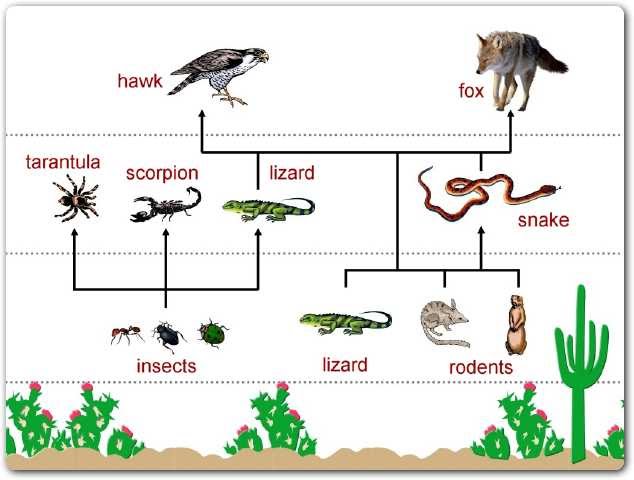
Secondary and Tertiary Consumers: Carnivores
In the harsh environments of deserts, carnivores play a crucial role as secondary and tertiary consumers within the food web. These animals are key to maintaining the ecological balance by controlling the population of primary consumers and contributing to the cycle of nutrients through their predatory activities.
- Secondary Consumers: These are animals that primarily prey on herbivores. Examples include:
- Snakes, which consume rodents, lizards, and birds.
- Spiders and scorpions, which feed on insects and other small animals.
- Tertiary Consumers: These top predators feed on both primary and secondary consumers, regulating the desert ecosystem. Examples include:
- Birds of prey like hawks and eagles, which have sharp vision to spot and capture small mammals and birds.
- Carnivorous mammals such as foxes and wolves, which hunt various animals for food.
These carnivores have adapted unique hunting strategies and physiological traits to survive in the desert. For example, many are nocturnal, hunting at night to avoid the extreme daytime heat. Their presence is vital for controlling prey populations, preventing overgrazing, and supporting a balanced ecosystem. Carnivores in desert ecosystems exemplify the intricate connections and dependencies within food webs, showcasing nature"s adaptability to even the most arid conditions.
Decomposers and Detritivores: Recycling Nutrients
Decomposers and detritivores are essential components of desert ecosystems, playing a critical role in recycling nutrients and breaking down organic matter. These organisms help maintain soil health and fertility, facilitating the continuation of life in these harsh environments.
- Decomposers: Fungi and bacteria are the primary decomposers in deserts, breaking down dead plant and animal matter at the molecular level. They transform organic waste into nutrients that can be reused by primary producers, thus sustaining the nutrient cycle.
- Detritivores: These include insects, such as termites and beetles, and other invertebrates that feed on dead organic material. They physically break down detritus into smaller pieces, which further aids decomposers in the recycling process.
Together, decomposers and detritivores ensure the efficient recycling of nutrients, crucial for the survival of desert ecosystems. They help prevent the accumulation of dead organic matter, contributing to a balanced and sustainable environment. Their role underscores the interconnectedness of all life forms in maintaining the health of the ecosystem.
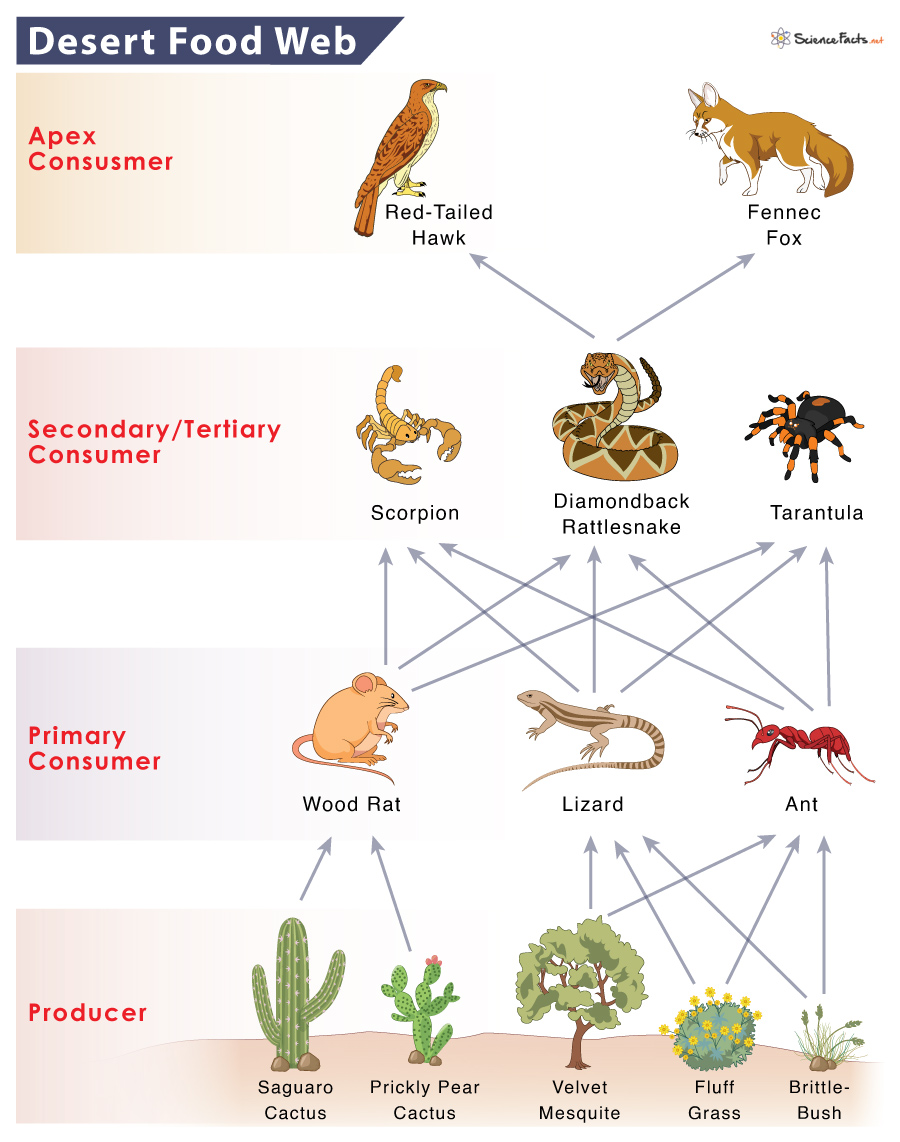
Adaptations to Extreme Conditions
Life in desert ecosystems is a testament to the resilience and adaptability of both flora and fauna. These organisms have evolved a remarkable array of strategies to survive under extreme conditions of temperature, water scarcity, and nutrient-poor soils.
- Water Conservation: Many desert plants, such as cacti and succulents, have adapted to store water in their leaves, stems, or roots. Animals like the kangaroo rat minimize water loss by producing highly concentrated urine and dry feces.
- Temperature Regulation: Desert animals employ various strategies to cope with extreme temperatures. Many are nocturnal, venturing out during the cooler night hours. Others, like the fennec fox, have large ears to dissipate heat.
- Shelter Seeking: Burrowing is a common adaptation, allowing animals to escape the heat of the day and the cold of the night. For example, reptiles and small mammals use underground burrows to maintain a stable temperature.
- Efficient Foraging: Desert organisms often have adaptations that enable them to find food efficiently. Plants like the creosote bush have extensive root systems to capture scarce water and nutrients, while predators like the coyote have keen senses to track down prey over vast distances.
- Reproductive Strategies: Many desert plants and animals have adapted their reproductive cycles to coincide with the rare rainy seasons, ensuring that their offspring have the best chance of survival.
These adaptations are not just about individual survival but are crucial for the maintenance of the desert ecosystem as a whole. They illustrate the incredible diversity of life and the complex interdependencies that characterize these arid landscapes.
Desert Food Chain Animation for School
Animation: Step into a whimsical world of vibrant colors and captivating characters in this enchanting animation that will transport you to a magical realm filled with adventure and heartwarming moments. Watch now! Ecosystem: Discover the intricate balance and beauty of nature in this fascinating exploration of the interconnected web of life within an ecosystem. From lush forests to bustling oceans, embark on a journey of discovery. Watch now!
Desert Food Chains
Impact of Climate Change on Desert Food Webs
Climate change poses significant challenges to desert ecosystems, affecting food webs through alterations in temperature, precipitation patterns, and extreme weather events. These changes have profound effects on the delicate balance of desert life, impacting species distribution, abundance, and the interactions between organisms.
- Altered Precipitation Patterns: Changes in rainfall can lead to more severe droughts or, conversely, increased flooding. This affects plant growth and productivity, directly impacting herbivores and the predators that rely on them.
- Temperature Extremes: Rising temperatures can shift the distribution of species as they move to cooler areas, potentially disrupting established food webs. For instance, primary producers may experience stress, reducing their availability to herbivores.
- Invasive Species: Climate change can facilitate the spread of invasive species that outcompete native flora and fauna, leading to reduced biodiversity and altered food web dynamics.
- Timing of Biological Events: The timing of flowering, breeding, and migration can be disrupted, leading to mismatches in the food web. For example, if pollinators emerge before or after the flowering of plants due to temperature changes, it can affect plant reproduction and, subsequently, the species that depend on those plants.
- Increased CO2 Levels: Higher carbon dioxide levels can stimulate plant growth in some desert species, potentially altering competitive balances among plants and impacting the entire food web.
These impacts of climate change on desert food webs highlight the interconnectedness of ecosystem components. The resilience of desert ecosystems depends on their ability to adapt to these changes, underscoring the importance of conservation and sustainable management practices to mitigate adverse effects and preserve biodiversity.

READ MORE:
Conservation Efforts for Desert Ecosystems
Conservation efforts for desert ecosystems are increasingly important as these areas face threats from climate change, habitat destruction, and human activities. Initiatives to protect and restore these vital landscapes are diverse, ranging from local to global efforts, involving communities, governments, and international organizations.
- Protected Areas: Establishing protected areas is a fundamental strategy to conserve biodiversity and natural habitats in deserts. These areas safeguard against the encroachment of development and provide sanctuaries for wildlife.
- Restoration Projects: Ecological restoration projects aim to rehabilitate degraded desert areas. Techniques include reforestation with native plants, erosion control measures, and the reintroduction of extinct or endangered species.
- Water Conservation: Innovations in water management and conservation are critical for sustaining desert ecosystems. Techniques include the use of drought-resistant plant species and efficient irrigation systems to reduce water usage.
- Combating Desertification: Efforts to combat desertification involve soil conservation, sustainable land management practices, and combating the overuse of land resources to prevent further degradation of desert landscapes.
- Community Involvement and Education: Engaging local communities through education and sustainable development projects is key to the success of conservation efforts. Empowering residents with knowledge and resources promotes stewardship of the desert environment.
- Climate Change Mitigation: Addressing the broader issue of climate change is essential for the long-term preservation of desert ecosystems. Strategies include reducing greenhouse gas emissions and promoting renewable energy sources.
These conservation efforts are critical for preserving the unique biodiversity and ecological functions of desert ecosystems. By implementing sustainable practices and protective measures, it is possible to mitigate the impacts of human activities and climate change, ensuring these fragile habitats continue to thrive for future generations.
Exploring the intricate food web of desert ecosystems reveals the remarkable resilience and interconnectedness of life in arid landscapes, underscoring the vital importance of preserving these unique environments for future generations.

